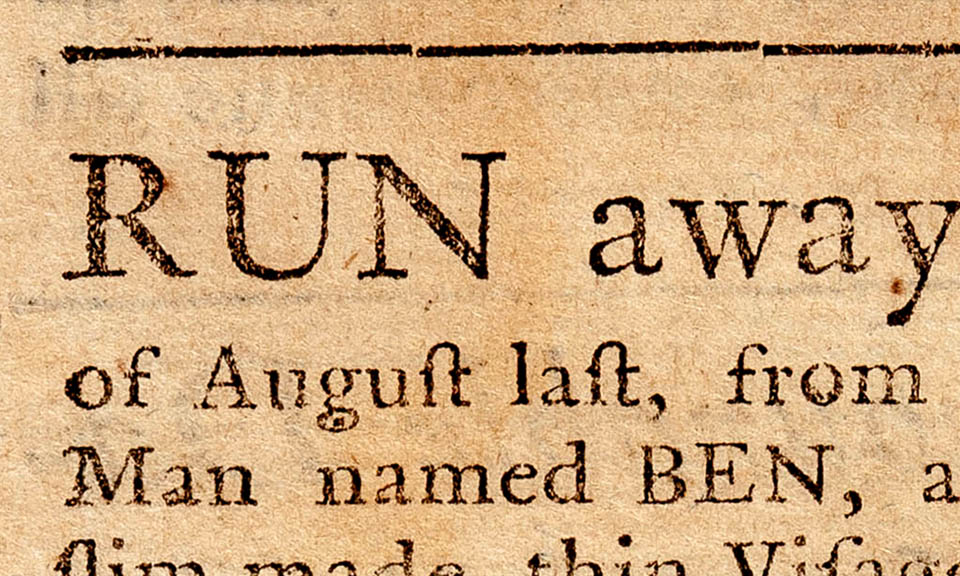Norton Minors: “...a Caulker and Ship Carpenter”
Norton Minors’ story shows the dramatic scope of colonial slavery. He, like many enslaved people, was shuttled between New England and the Caribbean before self-liberating and returning north.
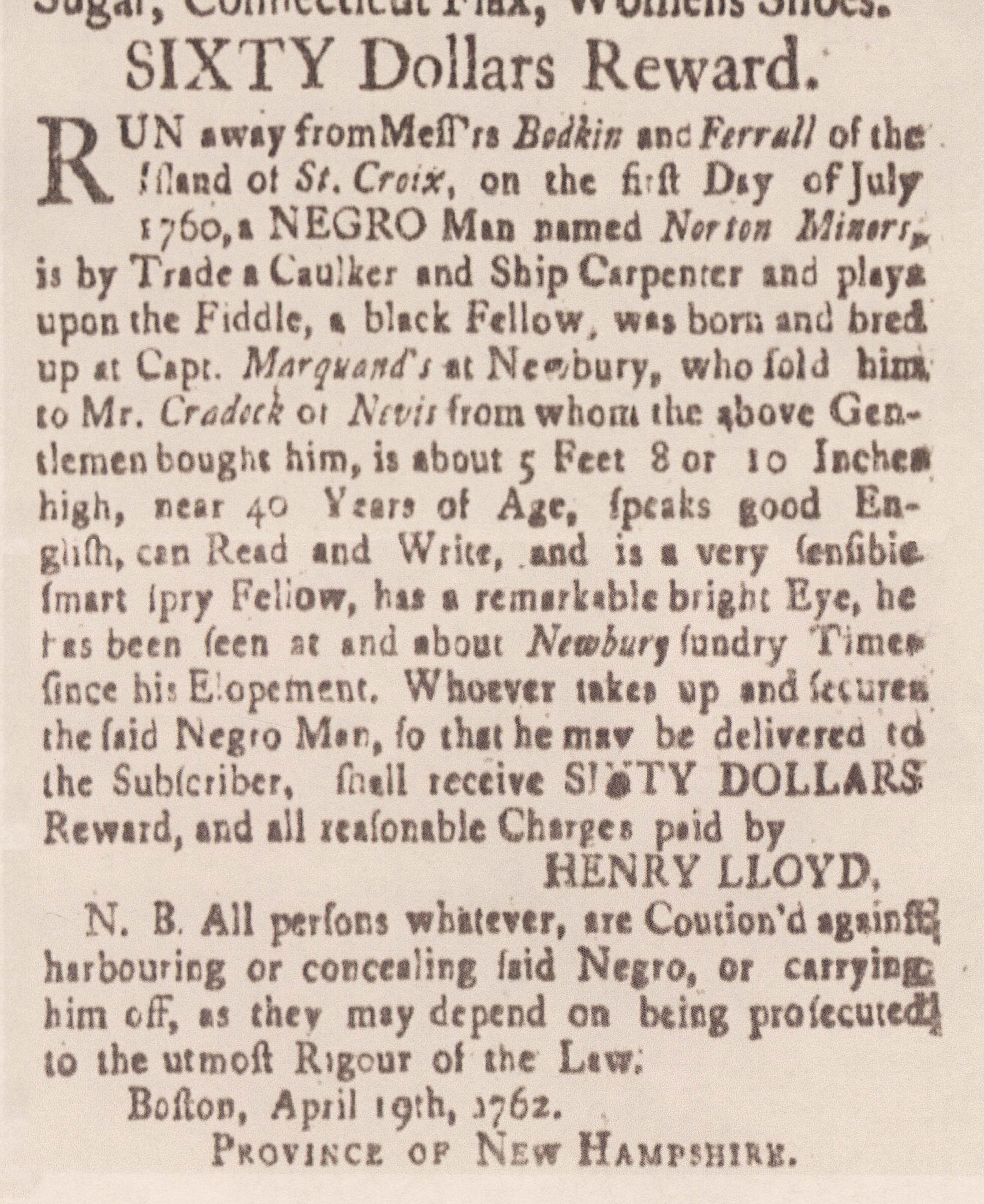
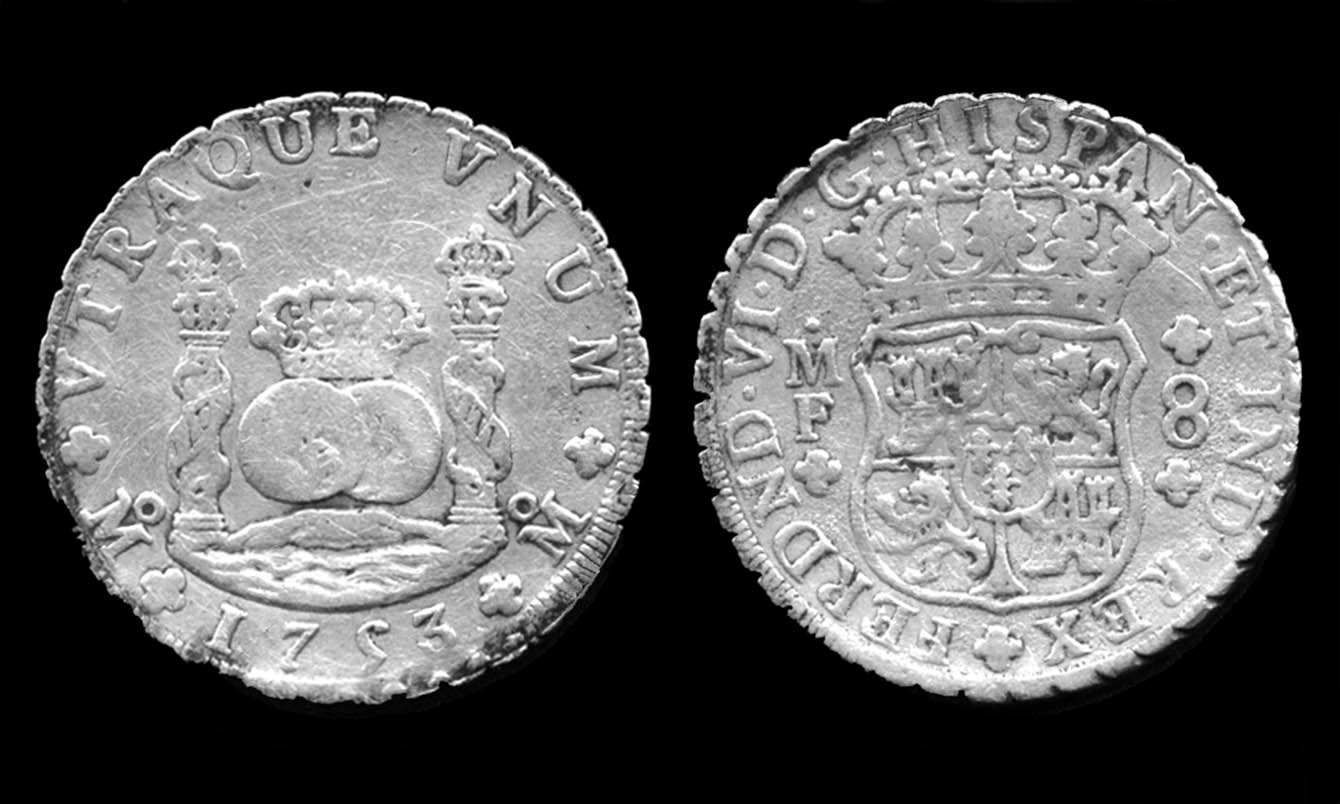
Spanish dollar coin
1753
UnknownColonists often used Spanish peso coins as standard currency in the colonial and New Nation period.
Wikimedia Commons.
SIXTY Dollars Reward
This was an extraordinarily large reward for a runaway. The Spanish dollar was a common form of currency before the American Revolution. The reward was worth nearly £20, or about half a year’s salary for a tradesman. The size of the reward likely reflects the enslaver’s estimate of Minors’ skills and education.
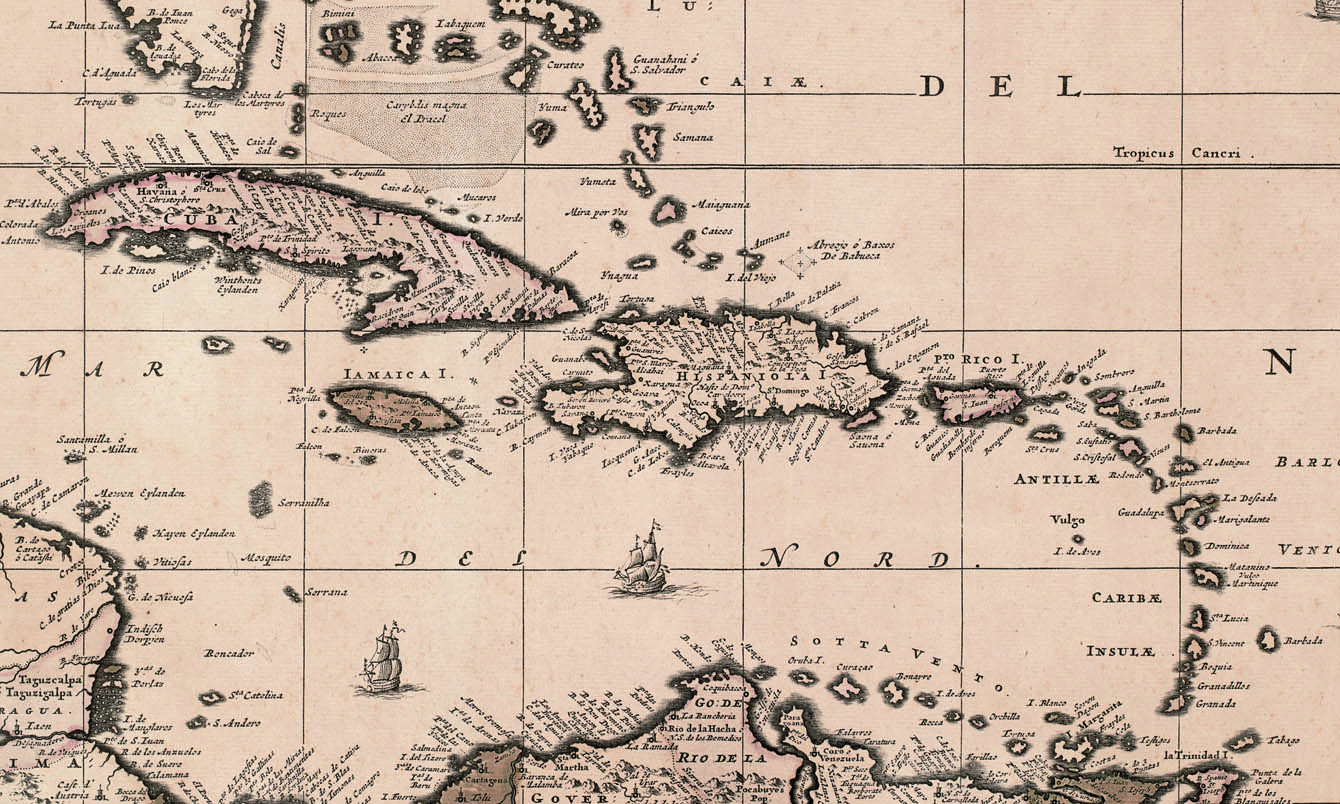
Insulae Americanae...
c. 1657
Nicholas Visscher (Dutch, 1618-1709)
Detail of a map of the Caribbean, showing the island of Barbadoes ("Barbada").
Historic Hudson Valley.
July, 1760
Norton Minors ran away almost two years before this advertisement was posted. Prior to his “elopement,” or flight, Minors had been sold to enslavers first in Nevis, then in St. Croix, both islands in the Caribbean. His return to Newbury suggests that he had family nearby.
Norton Minors
It was rare for enslaved individuals to have a surname. Minors’s last name did not match that of any of his three enslavers. He may have taken this name himself or it may have been added to differentiate between him and another person named Norton.
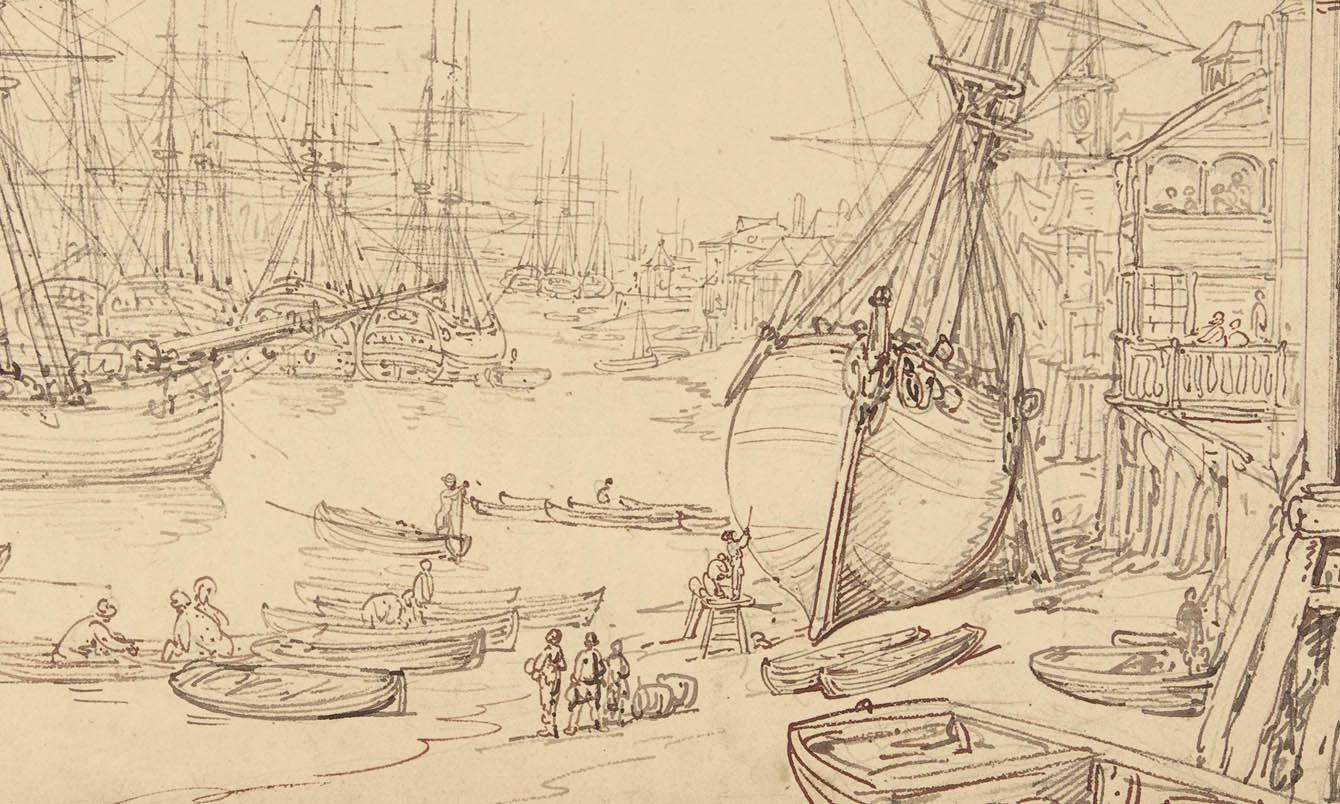
Shipyard, Greenwich
Before 1791
Thomas Rowlandson (English, 1756-1827)This detail shows of English shipyard workers caulking the hull of a ship.
The Elisha Whittelsey Collection, The Elisha Whittelsey Fund, 1959
a Caulker and Ship Carpenter
Minors’s skills as a caulker and ship carpenter would be useful in a shipbuilding town like Newbury and on the island of St. Croix. Minors also needed to be able to read to do his work. There were no laws prohibiting the education of enslaved individuals in colonial America.
Henry Lloyd
Henry Lloyd (1709–1795) was a wealthy Boston merchant who did business with St. Croix merchant and sugar planter Laurence Bodkin, Minors’s most recent enslaver. Lloyd had agreed to help Bodkin find Norton Minors.
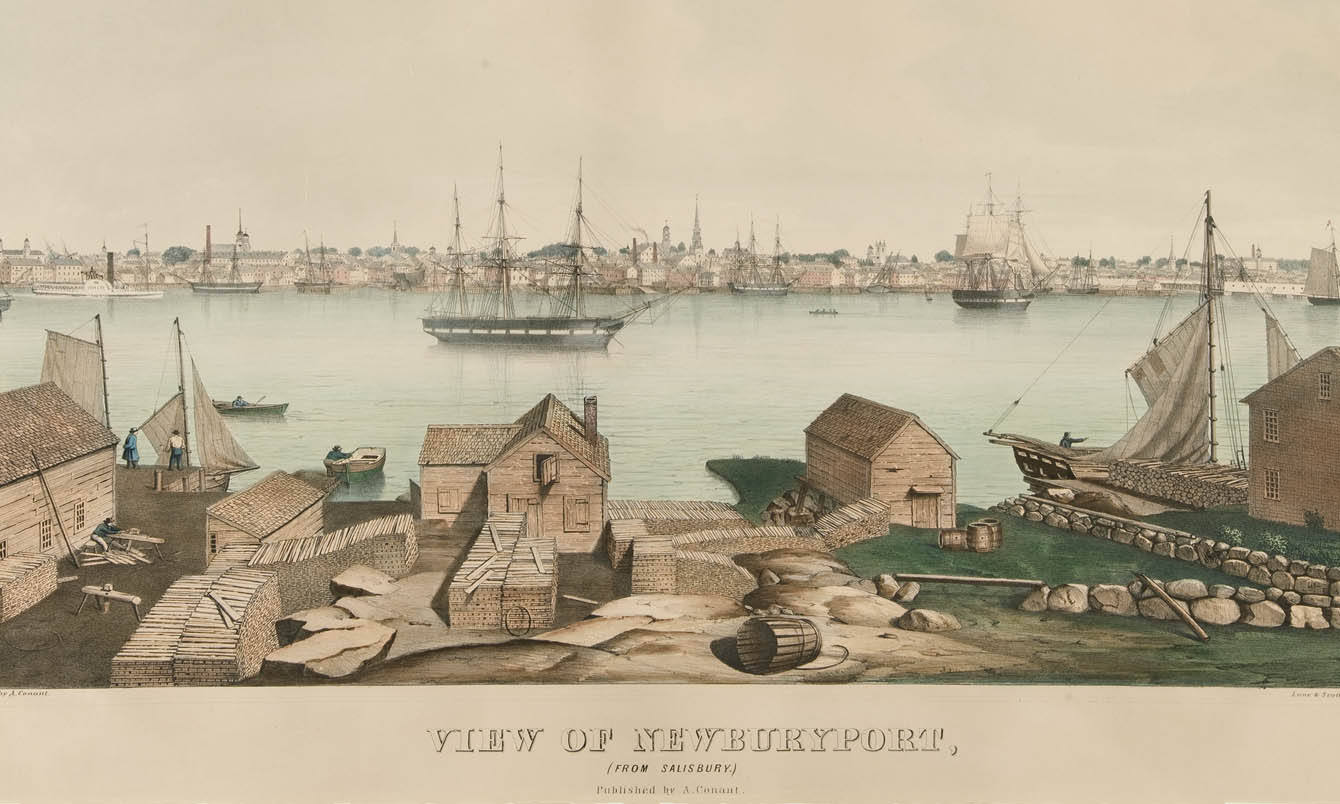
View of Newburyport (from Salisbury)
1845
Fitz Henry Lane (American, 1804-1865)
Although later, this image shows the working port at Newbury, a location Norton Minors knew well.
Yale University Art Gallery.
Caution’d against harbouring
The ad suggests that Minors returned to Newbury after escaping from his most recent enslaver in St. Croix. The postscript after Lloyd’s name was commonly used in runaway ads. In this case it served to remind local residents that anyone assisting Minors would be breaking the law.
Norton Minors: “...a Caulker and Ship Carpenter” Transcription text
SIXTY Dollars Reward.
RUN away from Mess’rs Bodkin and Ferrall of the Island of St. Croix, on the first Day of July 1760, a NEGRO Man named Norton Minors, is by Trade a Caulker and Ship Carpenter and plays upon the Fiddle, a black Fellow, was born and bred up at Capt. Marquand’s at Newbury, who sold him to Mr. Cradock of Nevis from whom the above Gentlemen bought him, is about 5 Feet 8 or 10 Inches high, near 40 Years of Age, speaks good English, can Read and Write, and is a very sensible smart spry Fellow, has a remarkable bright Eye, he has been seen at and about Newbury sundry Times since his Elopement. Whoever takes up and secures the said Negro Man, so that he may be delivered to the Subscriber, shall receive SIXTY DOLLARS Reward, and all reasonable Charges paid by
HENRY LLOYD,
N.B. All persons whatever, are Coution’d against harbouring or concealing said Negro, or carrying him off, as they depend on being prosecuted to the utmost Rigour of the Law.
Boston, April 19, 1762.
PROVINCE OF NEW HAMPSHIRE.
Advertisement for Norton Minors, a fugitive.
May 21, 1762
Unknown
From the New-Hampshire Gazette, Portsmouth, New Hampshire.
Courtesy, Newsbank/Readex, Early American Newspapers Collection and University of New Hampshire Library.
Norton Minors
It was rare for enslaved individuals to have a surname. Minors’s last name did not match that of any of his three enslavers. He may have taken this name himself or it may have been added to differentiate between him and another person named Norton.
To continue please visit People Not Property on a larger screen or horizontal device to fully experience this feature.


